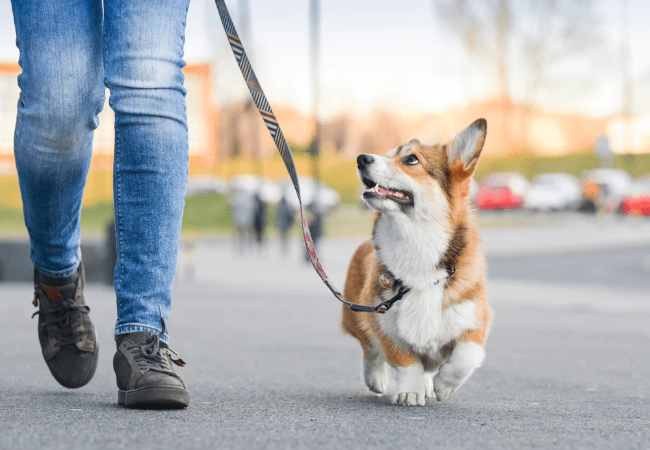Loose Leash Walking 2025: Vet-Backed Strategy & Tools 🐾

In this article
Loose Leash Walking 2025: Vet-Backed Strategy & Tools 🐾
By Dr. Duncan Houston BVSc
Is your dog constantly yanking during walks? That tugging on your arm isn't just annoying—it can strain their neck and damage your bond. Veterinarians and trainers alike recommend a gentle, structured approach to teach loose-leash walking—no scolds, no pull-chains. This guide combines positive reinforcement, key exercises,
1. 🧠 Why Loose Leash Walking Matters
- A loose leash ensures your dog isn’t choking or damaging their windpipe—gentle head halters like Gentle Leader are safer options than choke collars.
- Walking politely builds confidence, prevents injuries, and strengthens your bond.
2. 🔧 Essential Tools & Environment Setup
- Flat harness or gentle leader: Provides control without neck strain.
- 6-ft leash: Offers control and consistency—avoid retractables initially.
- Tasty, small treats: Can’t walk without them—help the dog learn to pay attention.
- Calm setting: Begin indoors or low-distraction area for initial training.
3. 🎯 Core Skills & Games
A. Leash-Pressure Game (“Tree” Method)
Stand still. When the leash is slack, even briefly, click or cue “Yes!” and reward near your side. This teaches that releasing tension brings rewards.
B. The U‑Turn Game
If they pull ahead, immediately turn and walk the opposite direction. Train them that pulling delays progress—eventually, they learn to stay with you.
C. Check‑In / Focus Cue
Teach “Look at me” or “Watch” so they refocus. Reward eye contact or following your finger—ideal for redirecting attention.
D. Sit & Heel Indoors
Train basic heel position without leash pressure indoors—bait with treats, next reward with walk steps.
E. Progressive Walks
Start with a few steps. Reward for each step beside you. Practice “tree” and U-turns. Gradually add distractions and longer walks.
4. 📋 Step-by-Step Routine
- Warm-up: ensure your dog has exercised—calms them for learning.
- Indoor Practice:
- Stand with slack leash → click/treat (Tree).
- Teach focus → reward eyes on you.
- Practice heel luring and walking a few steps.
- Outdoor Low-Distraction:
- Repeat indoors steps.
- Use "Let's go" cue when starting. Reward steps beside you.
- Add U-turn: whenever they pull, turn and go opposite → treat when beside you.
- Introduce Check-in: Cue focus, click and treat, continue walking.
- Increase Challenge: slowly add distractions while maintaining slack leash.
- Fade treats: gradually lengthen steps between treats; reward intermittently.
5. 🛠 Common Pitfalls & Fixes
- Pulling resumes: Retrain U‑turn and Tree games indoors.
- Fixated on distraction: increase distance, use high-value treats, call focus cue.
- Skipping indoors: training foundation is essential—don’t rush outside.
6. 🧰 Vet-Backed Tools & Support
- Woopf enrichment toys: Provide mental stimulation before or after walks to channel their energy.
7. ✅ Final Takeaways
- Loose-leash walking is humane, safe, and teaches desirable behaviors.
- Consistency is key—short sessions, frequent practice, reward accuracy.
- Use the "tree," U-turn, and check-in games to reinforce good leash behavior.
- Add distractions gradually and fade treat frequency over time.



